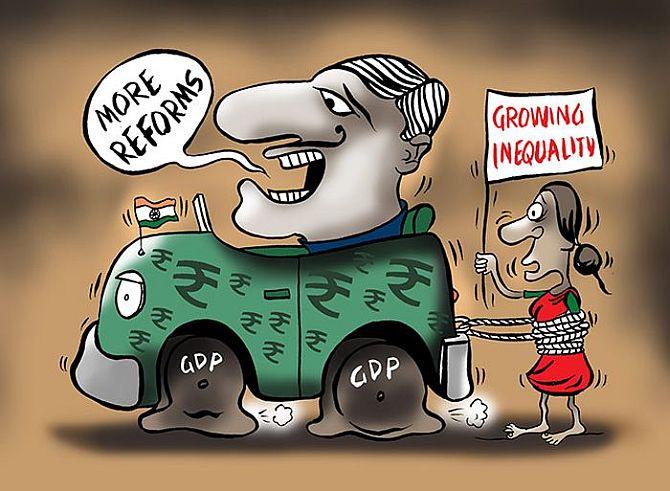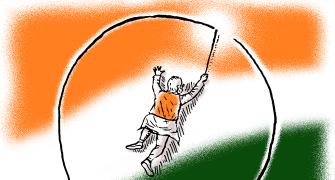The economy is required to grow by 5.2 per cent in the second half compared to 4.8 per cent in the first half to enable it to clock five per cent in the entire FY20.
If the Centre cuts expenditure by Rs 2 trillion, coupled with outlay compression by states, the growth rate would be severely hit, warn economists.

Early signs from lead indicators are showing some recovery in economic growth.
However, drastic expenditure cuts by the Centre and state governments may drag down the expansion to even below five per cent, which has been pegged by the advance estimates for 2019-20.
If the Centre cuts expenditure by Rs 2 trillion, coupled with outlay compression by states, the growth rate would be severely hit, warn economists.
“While some lead indicators have offered encouraging signs, the growing likelihood of expenditure cuts by the central and state governments pose key downside risk to achieving the targeted growth rate,” said Aditi Nayar, principal economist at ICRA.
For instance, production by Coal India rose 7.2 per cent in December of the current financial year after five straight months of contraction.
Devendra Pant, chief economist at India Ratings, said lead indicators show some uptick in the economy.
However, if the Centre and states resorted to heavy expenditure cuts, economic growth would be hit for the current financial year.
YES Bank chief economist Shubhada Rao said, “We continue to stick to our forecast of 4.9 per cent GDP growth in FY20 as we believe government spending may see some pruning due to substantial shortfall in tax revenue collection.”
SBI group chief economic advisor Soumya Kanti Ghosh said factors like government expenditure are the key determinants for overall growth outlook for FY20.
Variations in this spending have a spillover effect on other sectors.
He said government spending alone accounted for 40 per cent of the entire second quarter’s growth.
Growth in the second quarter printed at 4.5 per cent out of which 1.9 per cent was accounted for by government spending, he said.
He pegged economic growth at 4.6 per cent for FY20 based on the current available trends.
The economy is required to grow by 5.2 per cent in the second half compared to 4.8 per cent in the first half to enable it to clock five per cent in the entire FY20.
However, Nayar stuck to her projections of economic growth at 5.3 per cent for the current financial year if the government does not take sharp revenue cuts.
Nayar said there remains considerable headroom for spending by the Union government in the last four months of the current financial year.
It is to the tune of almost Rs 10 trillion relative to the budgeted level for FY20.
“However, revenue considerations would dictate some expenditure cut... Sharper than the expected expenditure squeeze by governments remains the key downside risk to our growth forecast,” she said.
The government spent almost Rs 18 trillion till November in the current financial year, which constituted 65.3 per cent of the Rs 27.86 trillion budget estimates (BE).
The proportion of the amount spent was almost same at 66.1 per cent of the BE at this point of time in 2018-19.
The finance ministry is looking to compress around Rs 2.2 trillion, even as gross tax revenue could see a shortfall of much more than Rs 2 trillion.
There are now doubts regarding divestment targets as well.
Most of the compression is expected to come from ministries and departments that have under-spent so far.
These include the ministries of agriculture, civil aviation, roadways, shipping, electronics, information technology, tourism and social sector, among others.
However, the government can resort to off-budget borrowings, particularly in the case of Food Corporation of India (FCI).
Loan to the tune of Rs 97,000 crore was provided to the FCI in the previous year.
If that is restored, the government would save that much expenditure which could be used to spur economic growth, but would spoil the fiscal math in later years.









